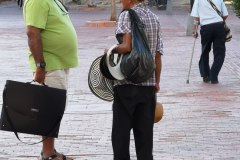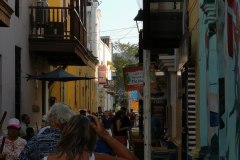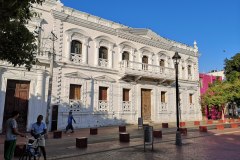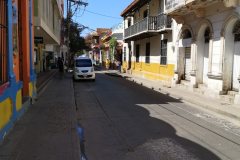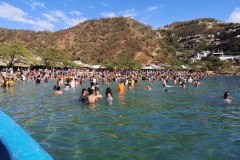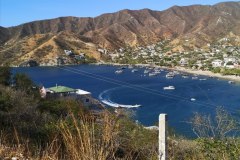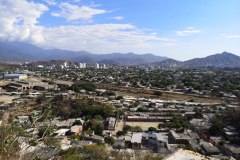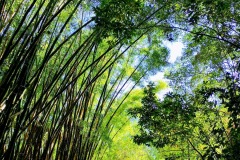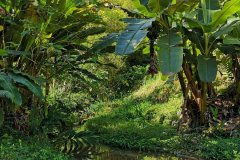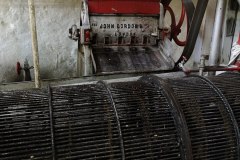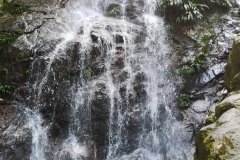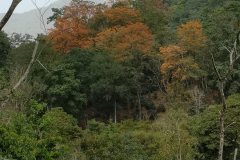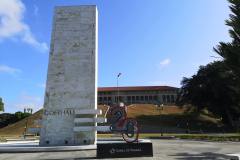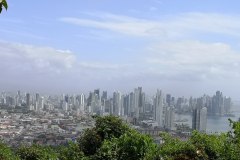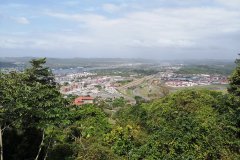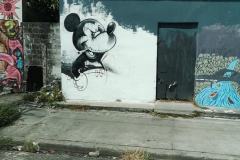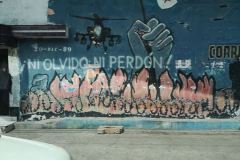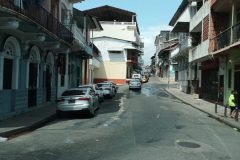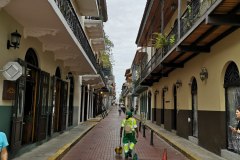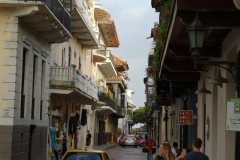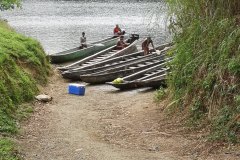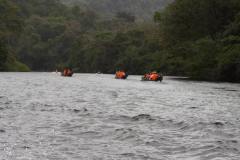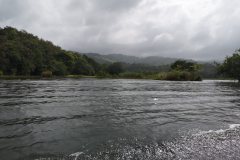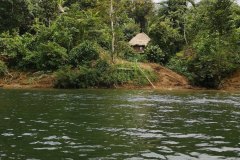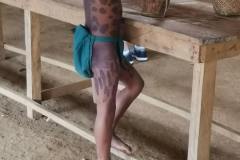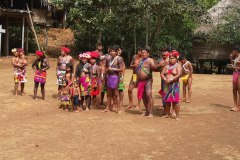We watched the BBC programme “Colombia with Simon Reeves” on our sail over. It had changed much of what we imagined about Colombia, and so we set out for our first evening ashore feeling fairly safe. It was still holiday season, we left the marina, crossed the beach road, and entered a maze of small streets. First impressions were of incredible street art on some of the buildings, and a mixture of both good and ramshackle buildings. We crossed the plaza, where the break dancers practised every night, and then entered a narrower street. This was full of restaurants, with tables out onto the street. We chose one, and had a superb, cheap, dinner, while watching the street musicians, break dancers, hawkers selling cigars and cheap goods, and all the families on their evening promenade. We saw two “tourist police” on Segways, but felt completely safe. What’s not to like about two pieces of filet mignon and veg, a dessert, a mojito, and a beer, all for £11 ?
Our first full day in Santa Marta included a city tour organised by ARC. This showed us both rich and poor areas of the city, before arriving at a former sugar estate which is now a public park. There was an old distillery to see and the owner’s house, where Simon Bolivar had died (17 December 1830). There was also a huge building in memory of him. Then it was back to the centre of the town, and the Cathedral, where Bolivar was buried. In 1842 Bolivar’s body was removed to Caracas and now only his heart is in the cathedral. In the evening it was back to “restaurant street” for another great meal, accompanied by music and break dancers.
We decided to explore the Tayrona National Park, famous for its jungle paths and superb beaches. The problem was that it was the weekend, and all the guidebooks warned about the queues to get into the park. However, an alternative route in was to taxi to the village just north of Santa Marta and travel to the park from there by boat. Brilliant, except when we got to the boat in Taganga it was still very windy. The port captain announced that no boats would be allowed to make the 10km journey to the national park, but our boat captain said he could take us snorkelling instead. We had a quick hop round the first headland and then drift snorkelled all the way back. We went ashore for lunch at Playa Grande where we had grilled local fresh fish and beer before fighting our way through the crowds on the beach and in the water to get back on our boat. A short boat trip and taxi ride, and we were soon back on Barracuda.
Another day, another trip ashore, this time to Minca (full of backpackers and fast gaining a reputation for eco-holidays), 600m up in the Sierra Nevada, but only 20km from Santa Marta. Rather than going on the ARC tour, we booked our own guide, and what a great guide we had; Juan, the owner of Bukap Travels. After the main road to Minca, we continued to ascend along worsening tracks, before dropping down into the valley where La Victoria coffee farm is situated. This was founded by a British couple in 1892. They had originally arrived to work on railway development, how they found their way to this remote valley is anyone’s guess. A stream runs through the valley and provides all the electricity for the farm. We got to see the whole production process from the beans on the bushes, through to the finished coffee bags. Most of the crop goes to the big coffee producers and only a limited amount is actually roasted and bagged on the farm. The inside of the processing unit was extraordinary, most of the equipment appears to date from the original setup! We then visited a local waterfall for a quick swim, before lunch at an eco-lodge with views over the surrounding countryside. Juan was a great guide with excellent knowledge of Colombian geography, people, politics, and its recent turbulent drug wars. (Motorbike muggings were almost wiped out overnight by a law decreeing that two men are not allowed on a motorbike, and all crash helmets have to have the licence plate number on them, maybe a lesson here for London?)
To finish, I’ll admit that there is extreme poverty (mainly Venezuelan) in Colombia, with tens of thousands having arrived recently. For example, I bought a couple of purses from street hawkers which were made by weaving banknotes together (each note being the equivalent of 0.003p). The street hawkers and children begging were everywhere in Santa Marta, but wouldn’t hassle if you said no. It was also not unusual to see locals missing a leg from stepping on a mine; many fled to this quieter area during the troubles.
Would I visit again? Definitely. Great scenery, food, and people, although the Foreign Office does advise against all travel to certain areas!
There was just time for another ARC briefing, and food and fuel replenishment, before the next leg of our journey, this time to the remote San Blas Islands off the NE coast of Panama.
A few things that stood out in Santa Marta were: the street art, musicians, and the incredible break dancers. I’ve included some photos and videos to show the standard!
(I forgot to mention the drugs patrol boat that moored on the pontoon across from us. They were all heavily armed on their 12-man RIB with very large outboard motors. The bows were encased in sheet metal, which judging by the dents, had been used for ramming on quite a number of occasions.)
